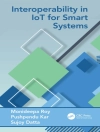A visual, interdisciplinary approach to solving problems in
numerical methods
Computing for Numerical Methods Using Visual C++ fills the need
for a complete, authoritative book on the visual solutions to
problems in numerical methods using C++. In an age of boundless
research, there is a need for a programming language that can
successfully bridge the communication gap between a problem and its
computing elements through the use of visual-ization for engineers
and members of varying disciplines, such as biologists, medical
doctors, mathematicians, economists, and politicians. This book
takes an interdisciplinary approach to the subject and demonstrates
how solving problems in numerical methods using C++ is dominant and
practical for implementation due to its flexible language format,
object-oriented methodology, and support for high numerical
precisions.
In an accessible, easy-to-follow style, the authors cover:
* Numerical modeling using C++
* Fundamental mathematical tools
* MFC interfaces
* Curve visualization
* Systems of linear equations
* Nonlinear equations
* Interpolation and approximation
* Differentiation and integration
* Eigenvalues and Eigenvectors
* Ordinary differential equations
* Partial differential equations
This reader-friendly book includes a companion Web site, giving
readers free access to all of the codes discussed in the book as
well as an equation parser called 'My Parser’ that can be used to
develop various numerical applications on Windows. Computing for
Numerical Methods Using Visual C++ serves as an excellent reference
for students in upper undergraduate- and graduate-level courses in
engineering, science, and mathematics. It is also an ideal resource
for practitioners using Microsoft Visual C++.
Spis treści
Chapter 1: Overview of C++.
Language style and organization.
Data types, variables.
Loops and branches.
Array, pointer, function, structure.
Classes and objects.
Inheritance, polymorphism, encapsulation.
Complexity analysis.
Chapter 2: Visual C++ Methods.
MFC library .
Fundamental interface tools.
Text displays.
Graphics and images.
Writing the first program.
Chapter 3: Fundamental Mathematical Tools.
C++ for High-Performance Computing.
Dynamic memory allocation.
Allocation for one-dimensional arrays.
Allocation for higher-dimensional arrays.
Case Study: Matrix multiplication problem.
Matrix elimination problems.
Vector and matrix norms.
Row operations.
Matrix reduction to triangular form.
Computing the determinant of a matrix.
Computing the inverse of a matrix.
Matrix algebra.
Data passing between functions.
Matrix addition and subtraction.
Matrix multiplication.
Matrix inverse.
Putting the pieces together.
Algebra of complex numbers.
Addition and subtraction.
Multiplication.
Conjugate.
Division.
Inverse of a complex number.
Putting the pieces together.
Number Sorting.
Programming Exercises.
Chapter 4: System of Linear Equations.
Systems of Linear Systems.
Existence of Solutions.
Elimination Techniques.
Gauss Elimination Method.
Gauss Elimination with Partial Pivoting.
Gauss-Jordan Method.
LU Factorization Techniques.
Crout Method.
Doolittle Method.
Cholesky Method.
Thomas Algorithm.
Iterative Techniques.
Jacobi Method.
Gauss-Seidel Method.
Visual C++ Solution Interface.
Summary.
Programming Exercises.
Chapter 5: Nonlinear Equations.
Iterative methods: convergence, stability.
Background: existence of solution, MVT, errors, etc..
Bisection method.
False-point position method.
Newton method.
Secant method.
Fixed-point iterative method.
Visual C++ Solution Interface.
Summary.
Programming Exercises.
Chapter 6: Interpolation and Approximation.
Concepts, existence, stability.
Lagrange.
Newton methods: forward, backward.
Stirling method.
Cubic spline interpolation.
Least-square approximation.
Visual C++ Solution Interface.
Summary.
Programming Exercises.
Chapter 7: Differentiation and Integration.
Taylor series.
Newton methods (forward, backward, central).
Trapezium method.
Simpson method.
Simpson 3/8 method.
Gauss quadrature.
Visual C++ Solution Interface.
Summary.
Programming Exercises.
Chapter 8: Eigenvalues and Eigenvectors.
Characteristic polynomials.
Power method.
Power method with shifting.
Visual C++ Solution Interface.
Summary.
Programming Exercises.
Chapter 9: Ordinary Differential Equations.
Existence, uniqueness, stability, convergence.
IVP: Taylor method.
Euler method.
Runge-Kutta of order 2 method.
Runge-Kutta of order 4 method.
Higher dimensional orders.
Multistep methods: Adams-Bashforth method.
Boundary Value Problems: finite-difference method.
Visual C++ Solution Interface.
Summary.
Programming Exercises.
Chapter 10: Partial Differential Equations.
Existence, uniqueness, stability, convergence.
Elliptic problem: Laplace equation.
Elliptic problem: Poisson equation.
Parabolic problem: heat equation.
Hyperbolic problem: wave equation.
Visual C++ Solution Interface.
Summary.
Programming Exercises.
Chapter 11: Finite Element Methods.
One-dimensional heat problem.
Linear approximation.
Quadratic approximation.
Two-dimensional problem: triangulation method.
Visual C++ Solution Interface.
Summary.
Programming Exercises.
O autorze
Shaharuddin Salleh, Ph D, is Professor in Computational
Mathematics, Faculty of Science (Mathematics), Universiti
Teknologi, Malaysia (UTM). Dr. Salleh’s research is in parallel
computing algorithms and scheduling, mobile computing, intelligent
systems, and numerical/combinatorial optimization problems. He is
also an IT Manager at the Research Management Centre, UTM.
Albert Y. Zomaya, Ph D, is the Head of School and CISCO Systems
Chair Professor of Internetworking in the School of Information
Technologies at the University of Sydney. He is the author or
coauthor of several books and more than 300 publications. He is an
IEEE Fellow.
Sakhinah Abu Bakar is Lecturer in Computational Mathematics at
the School of Mathematical Sciences, Faculty of Science and
Technology, National University of Malaysia. She is currently
pursuing her Ph D degree at the University of Sydney.












